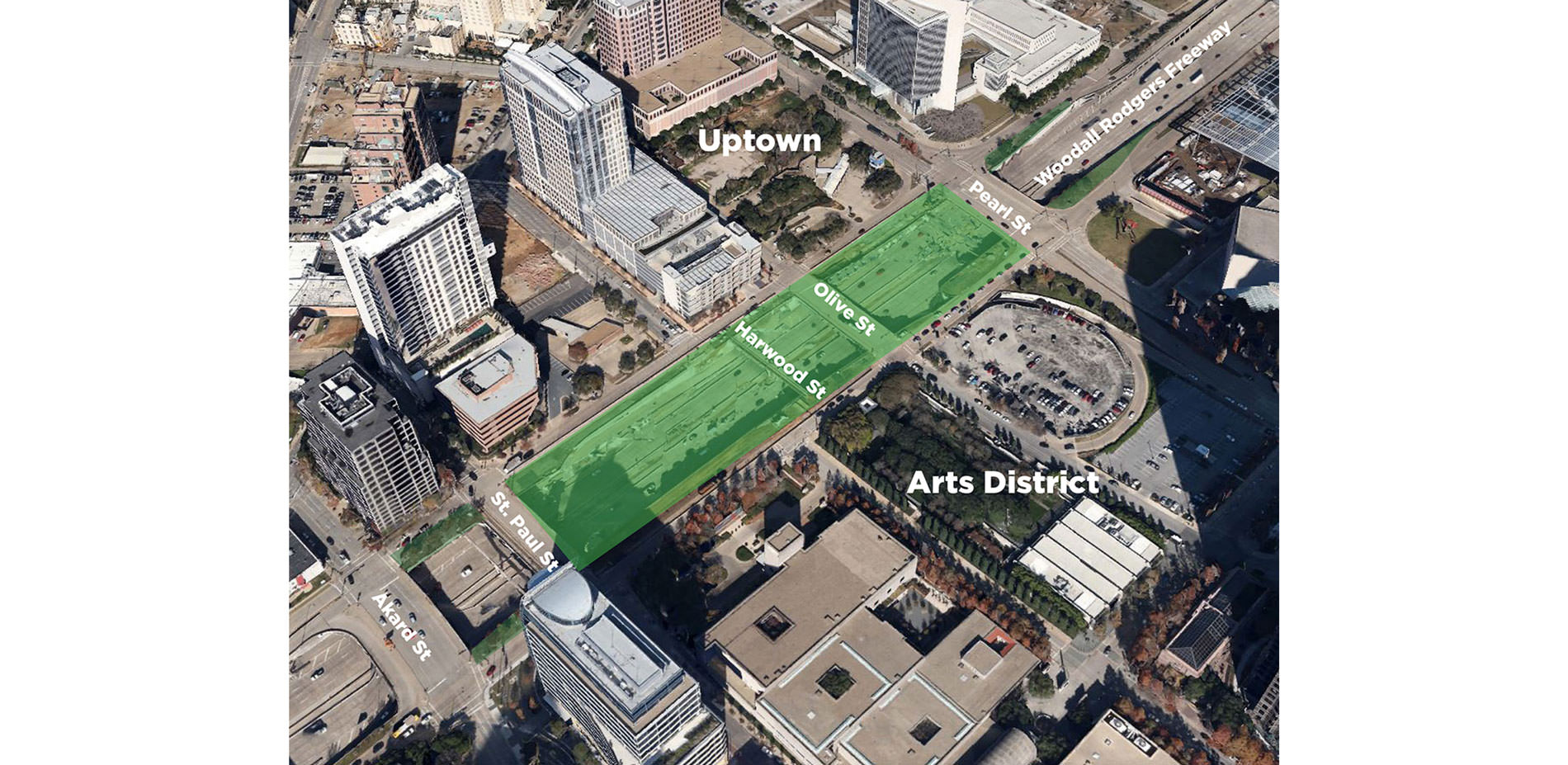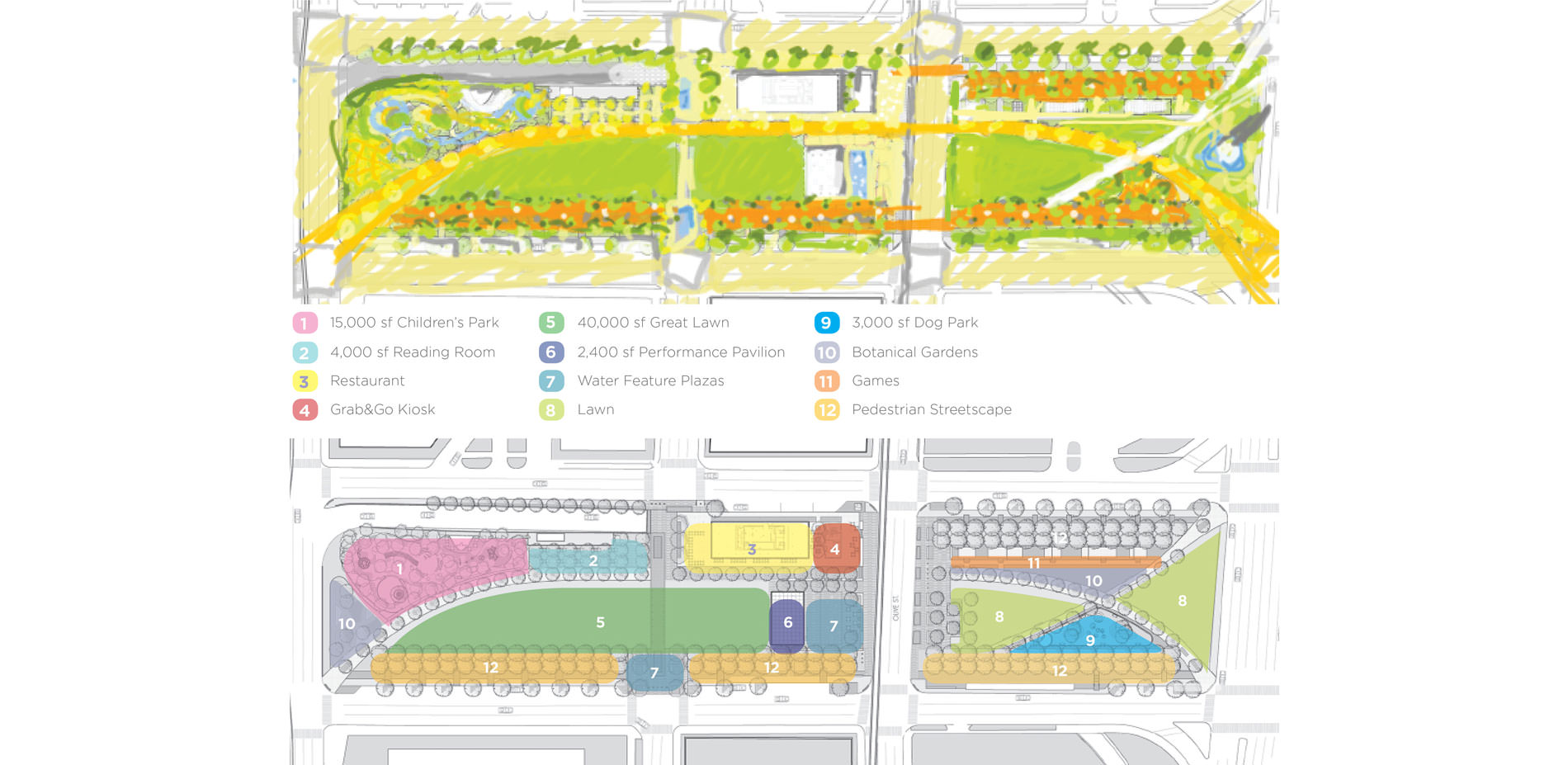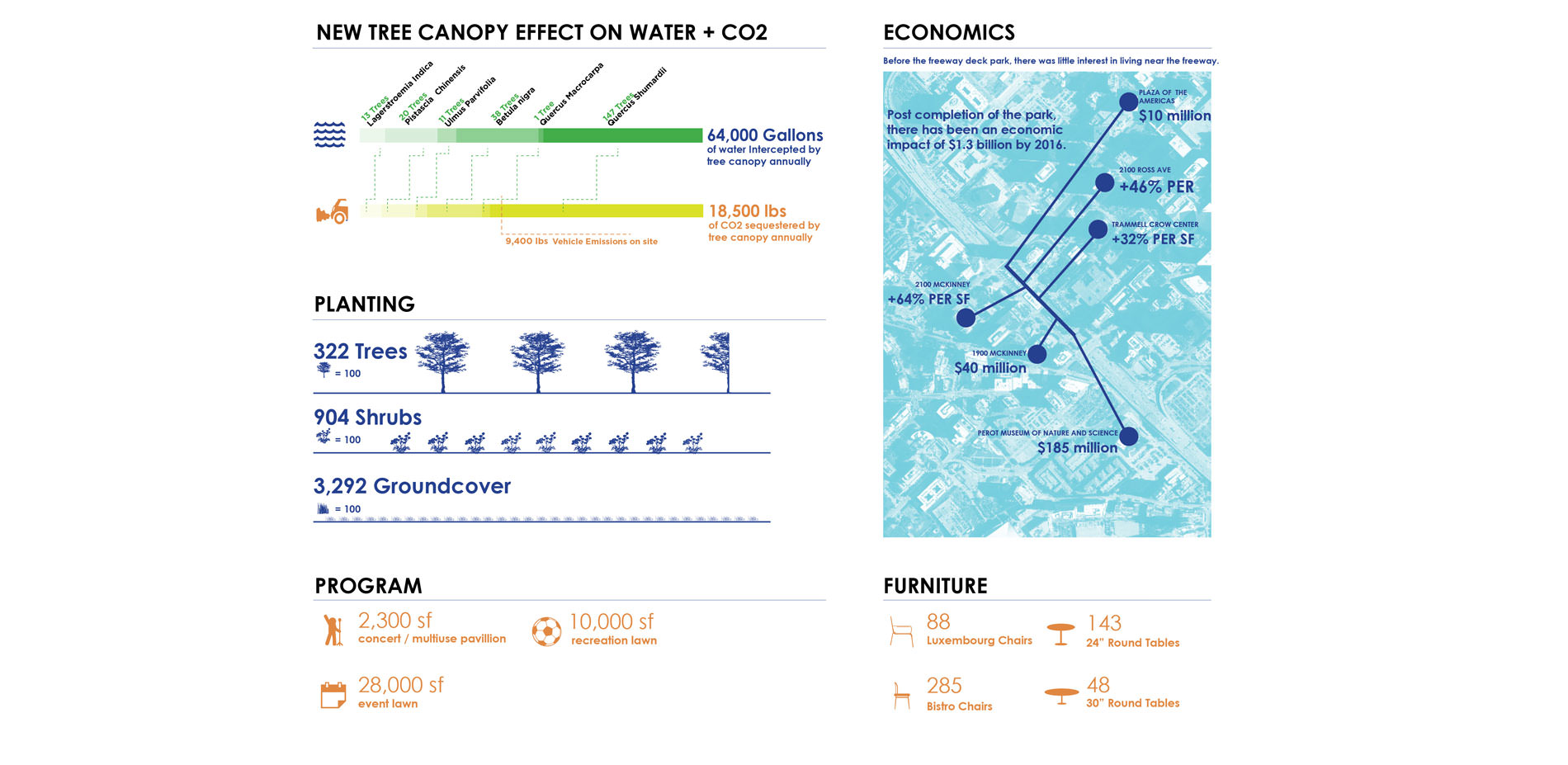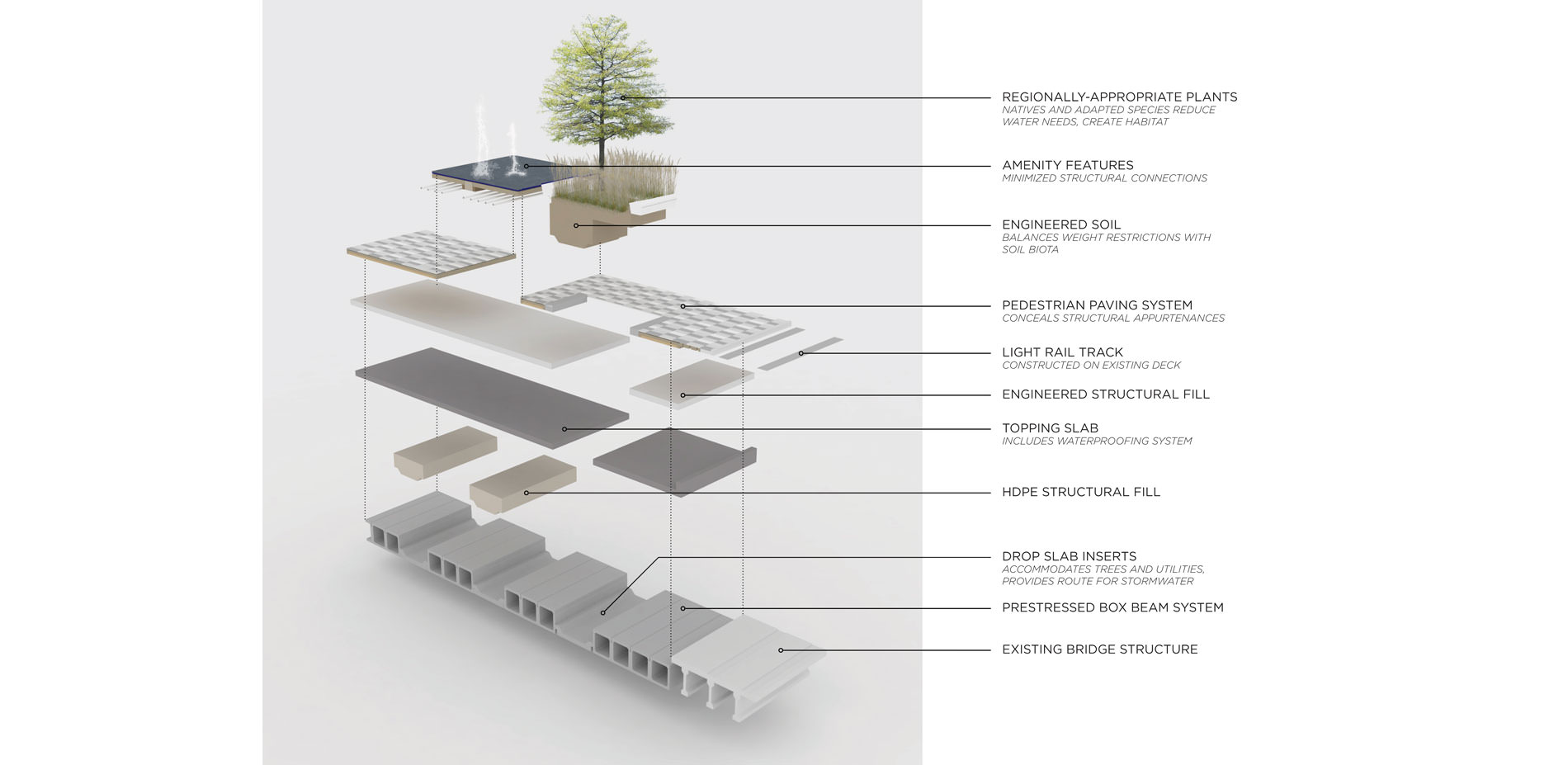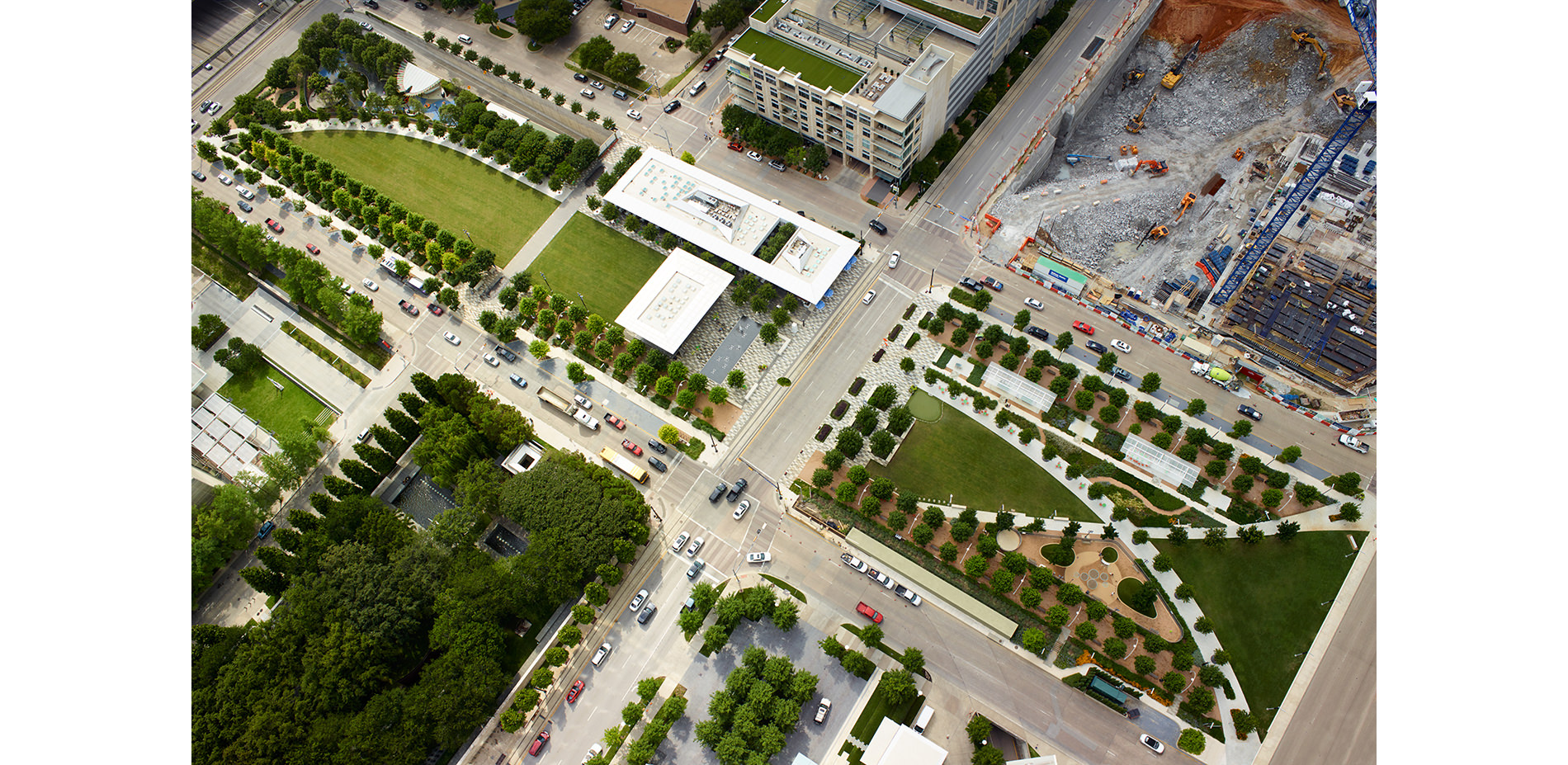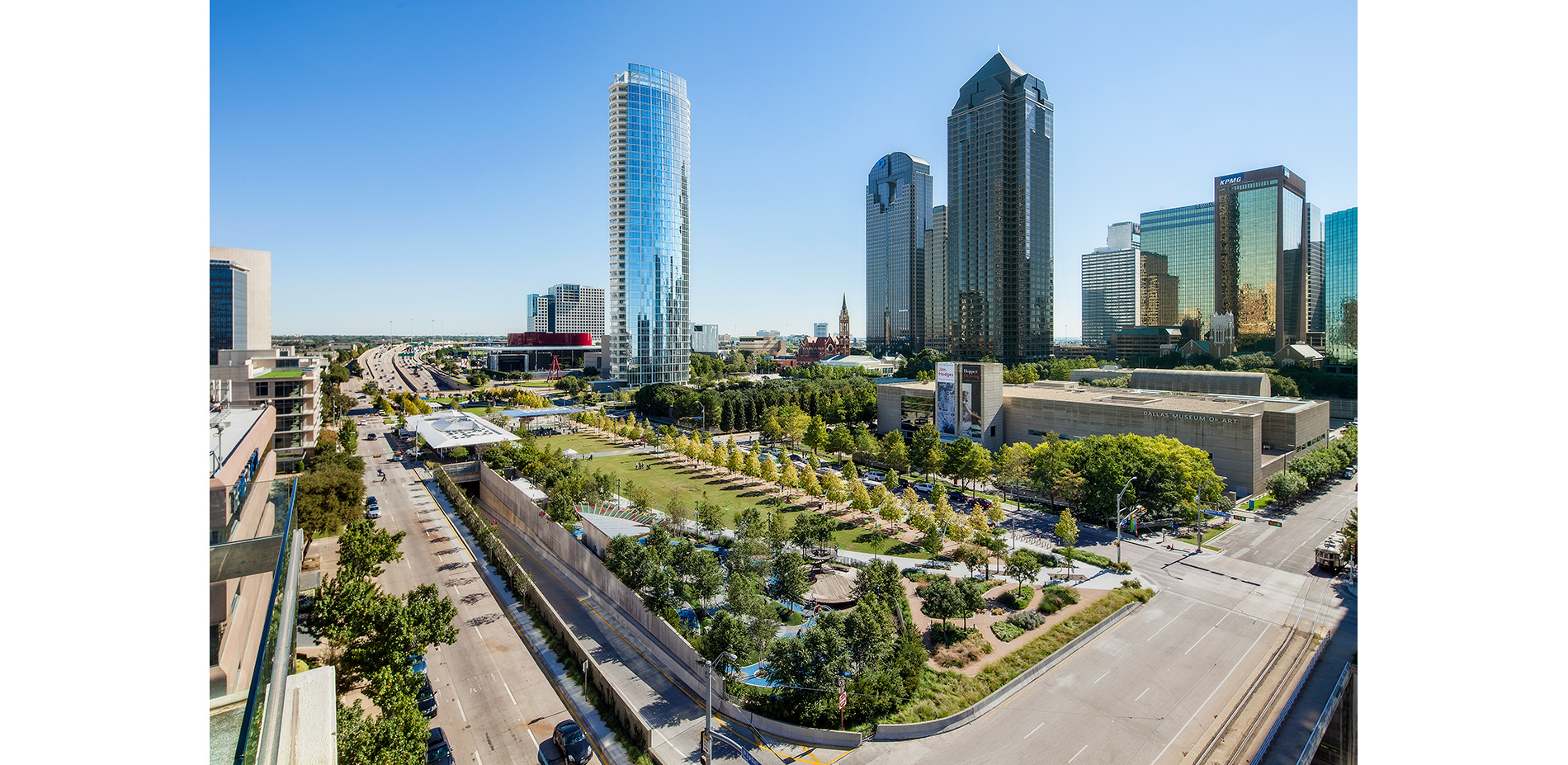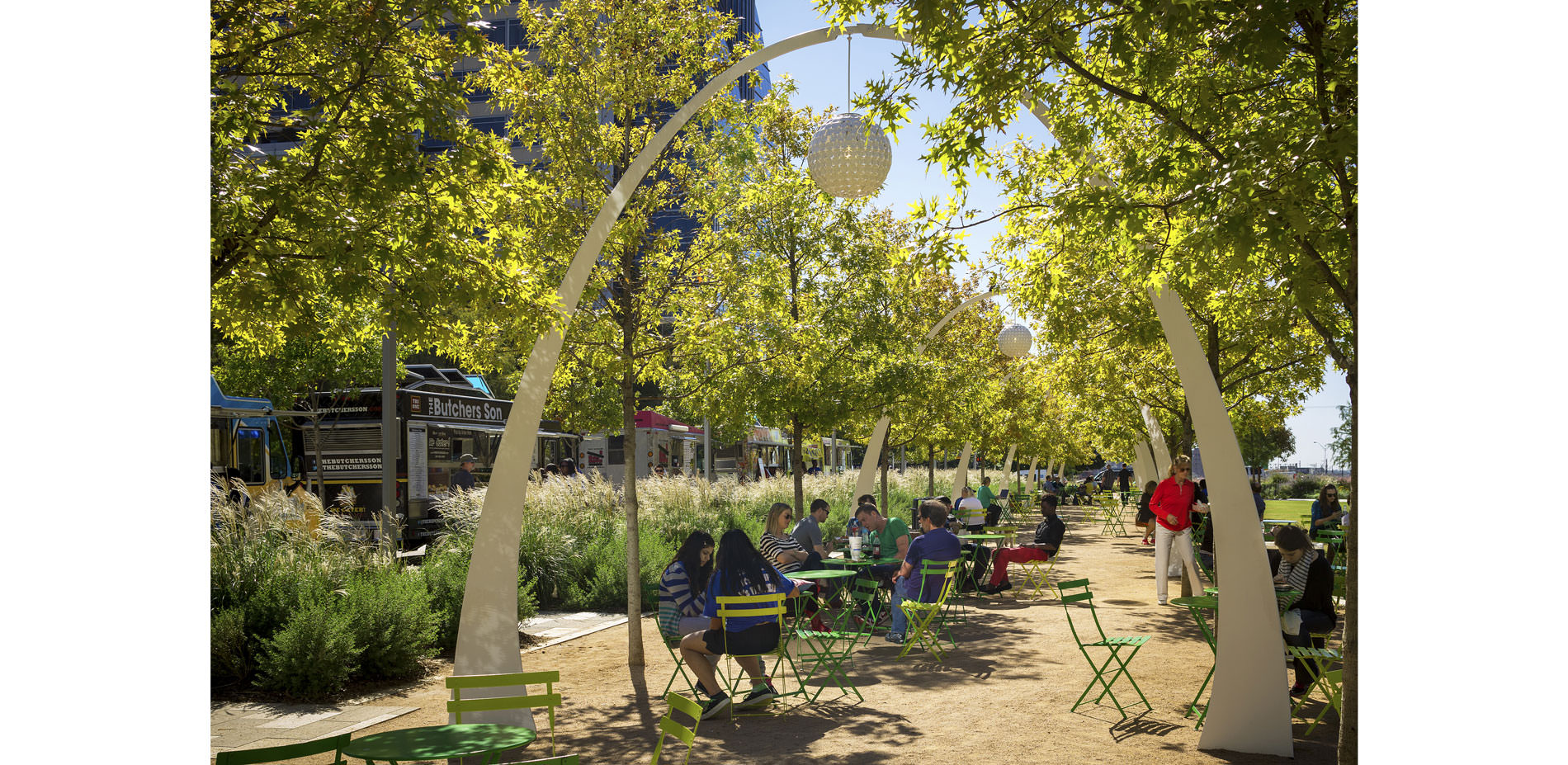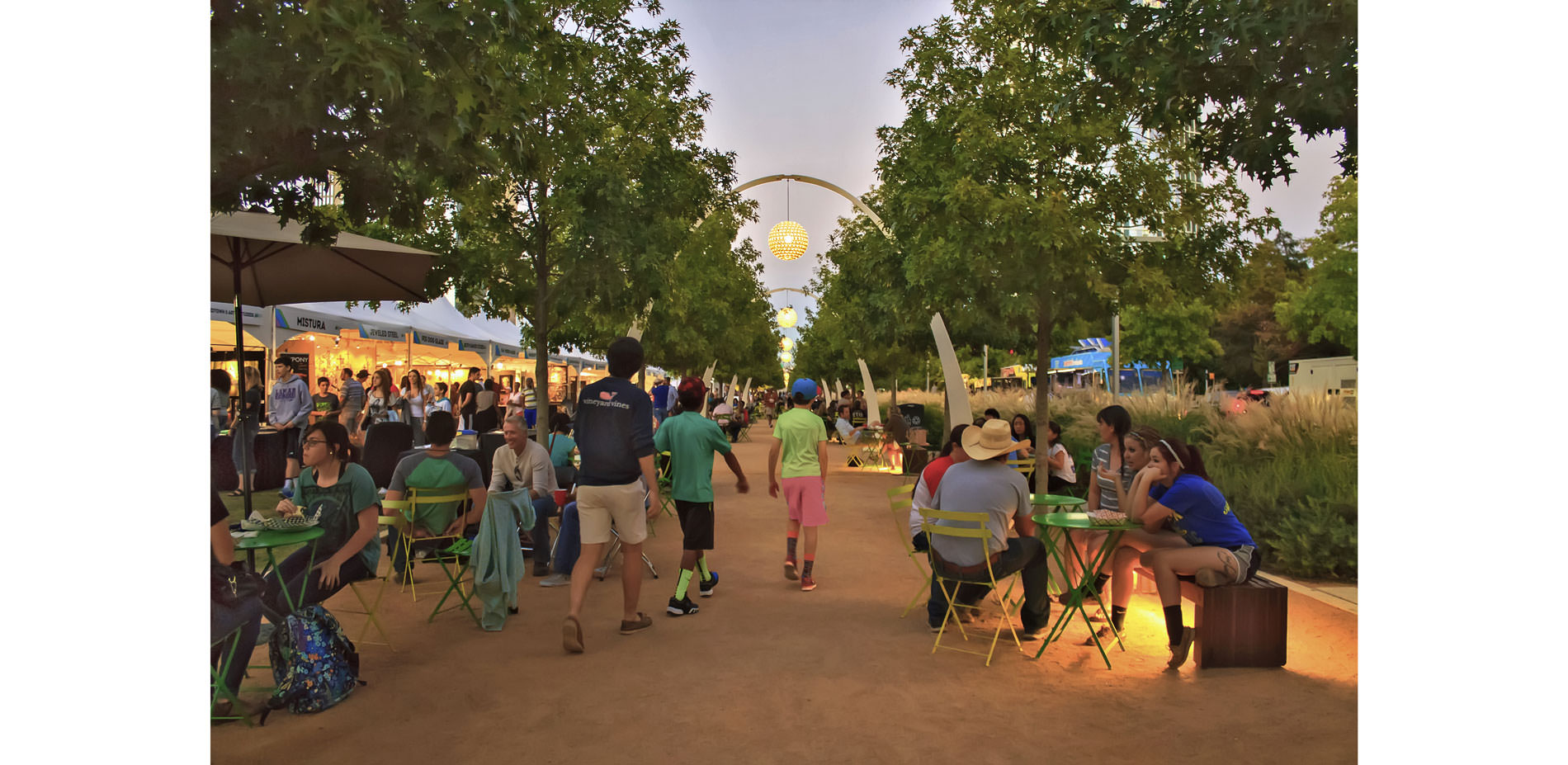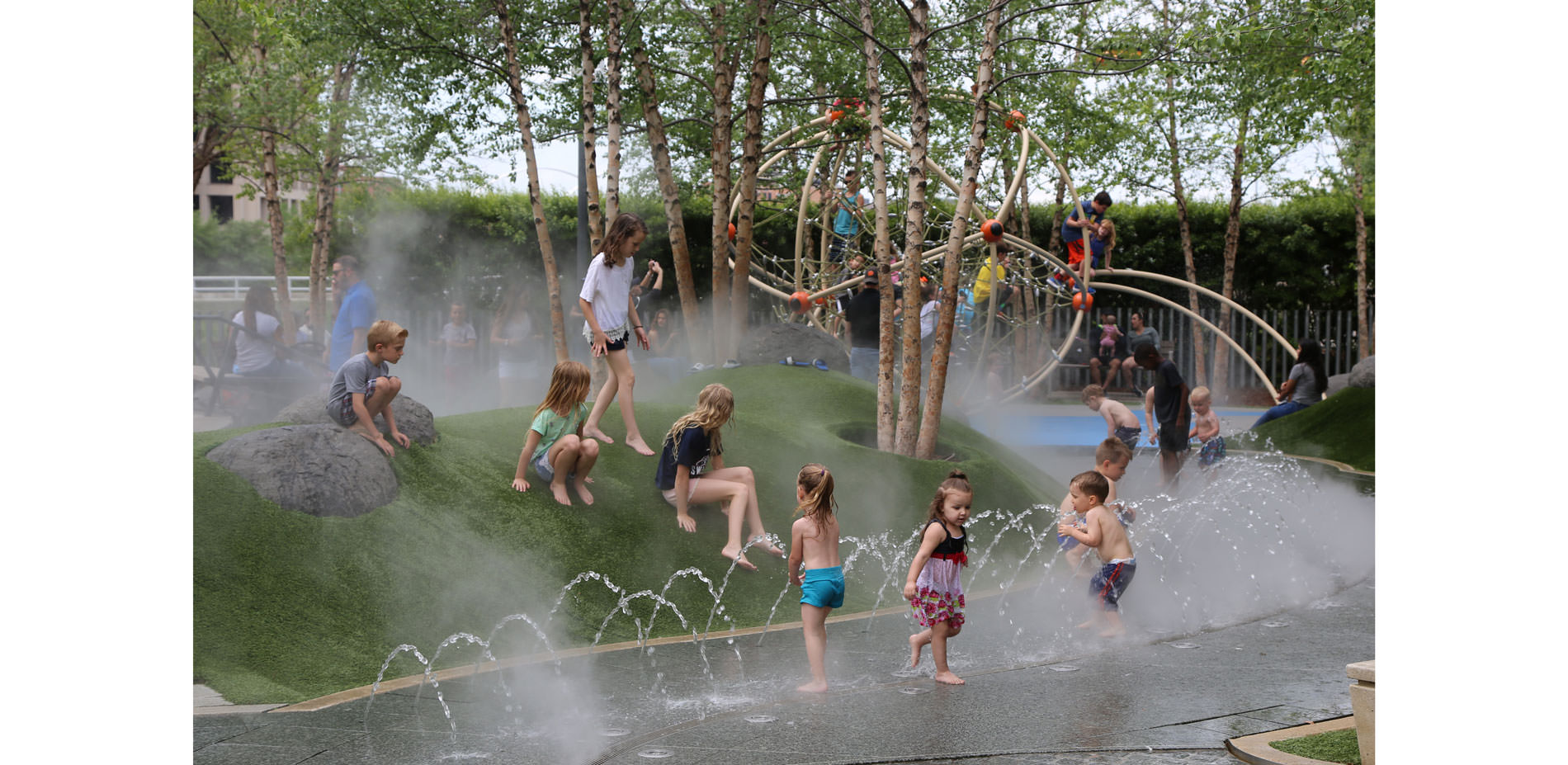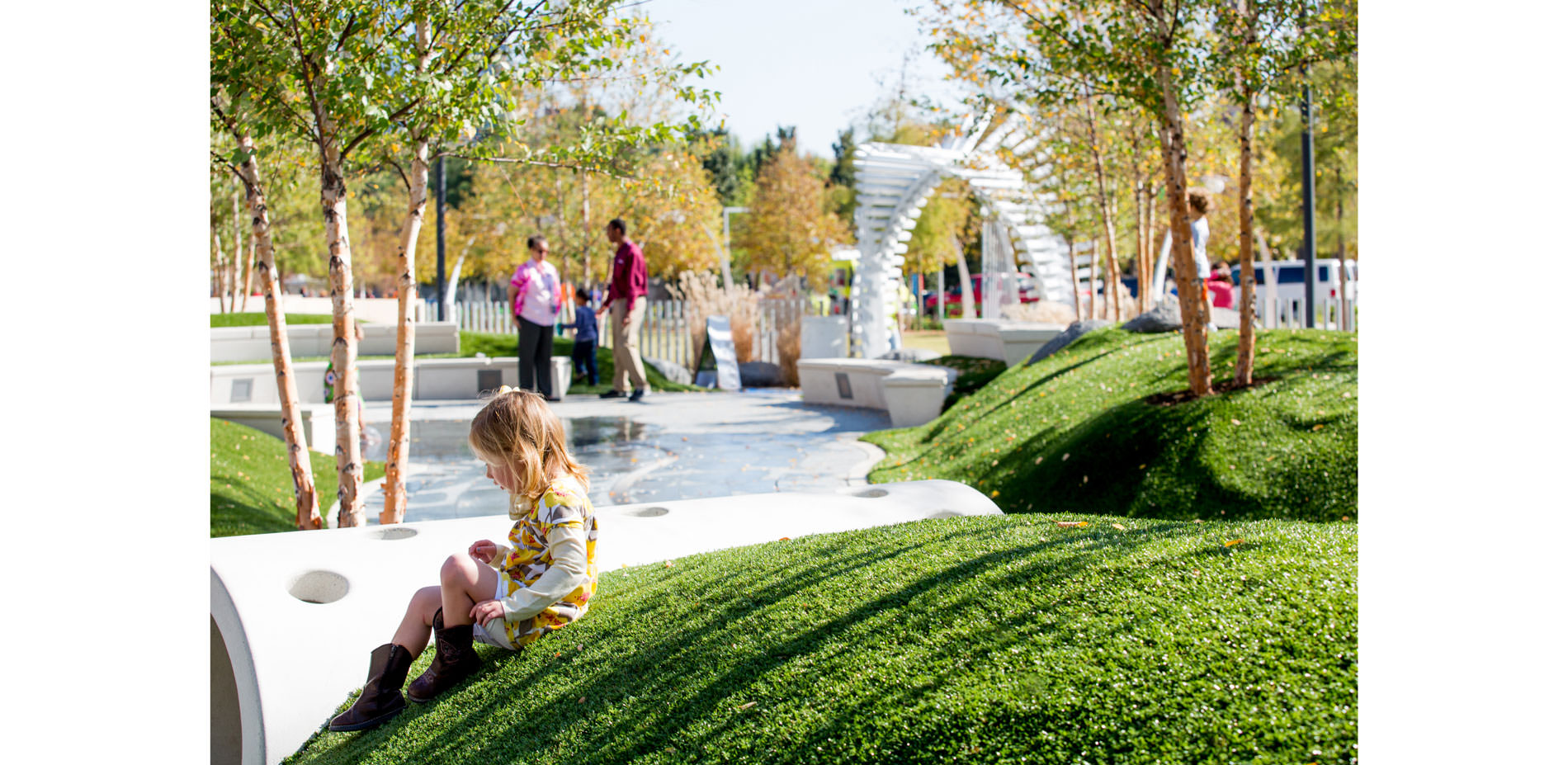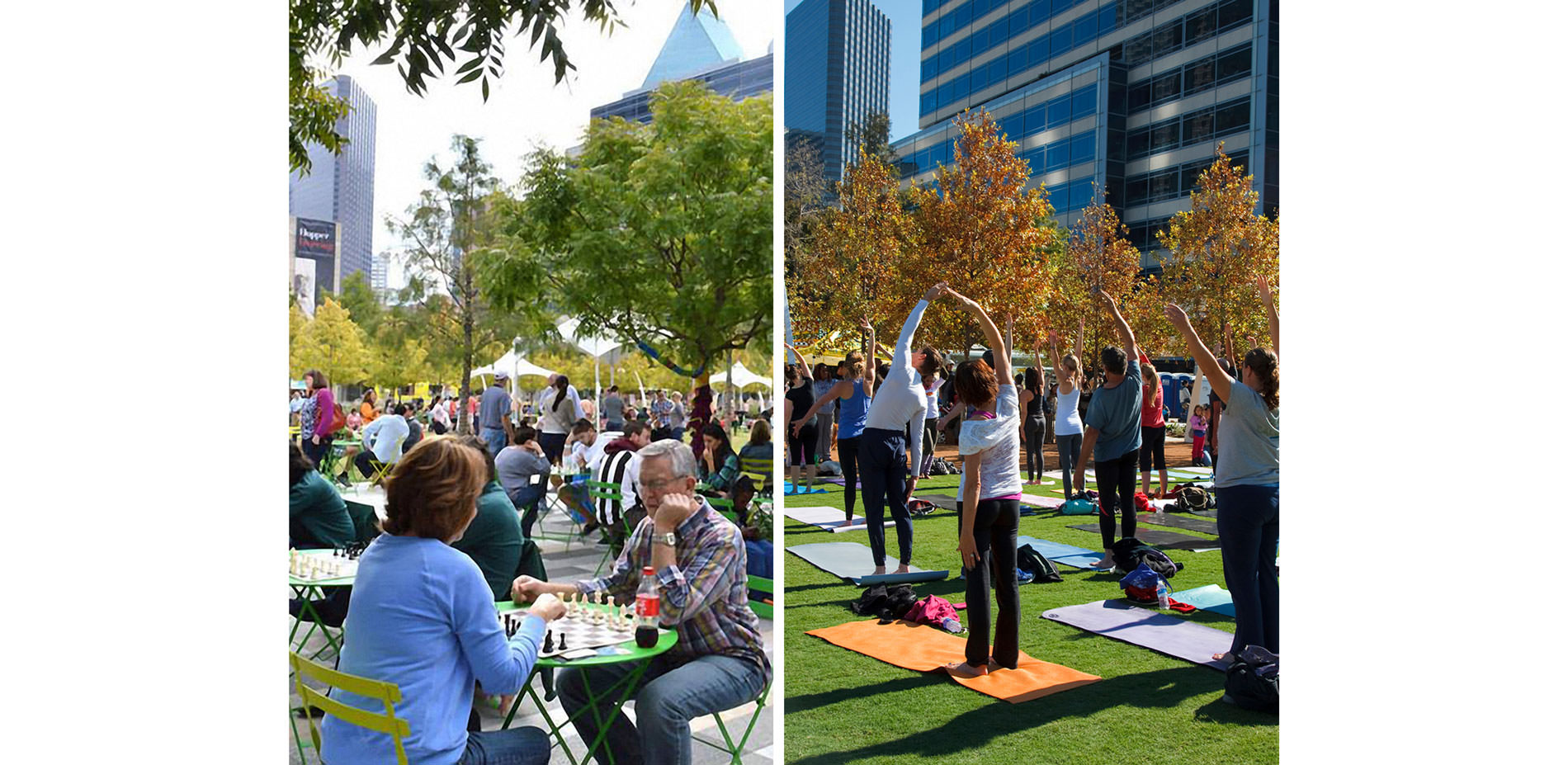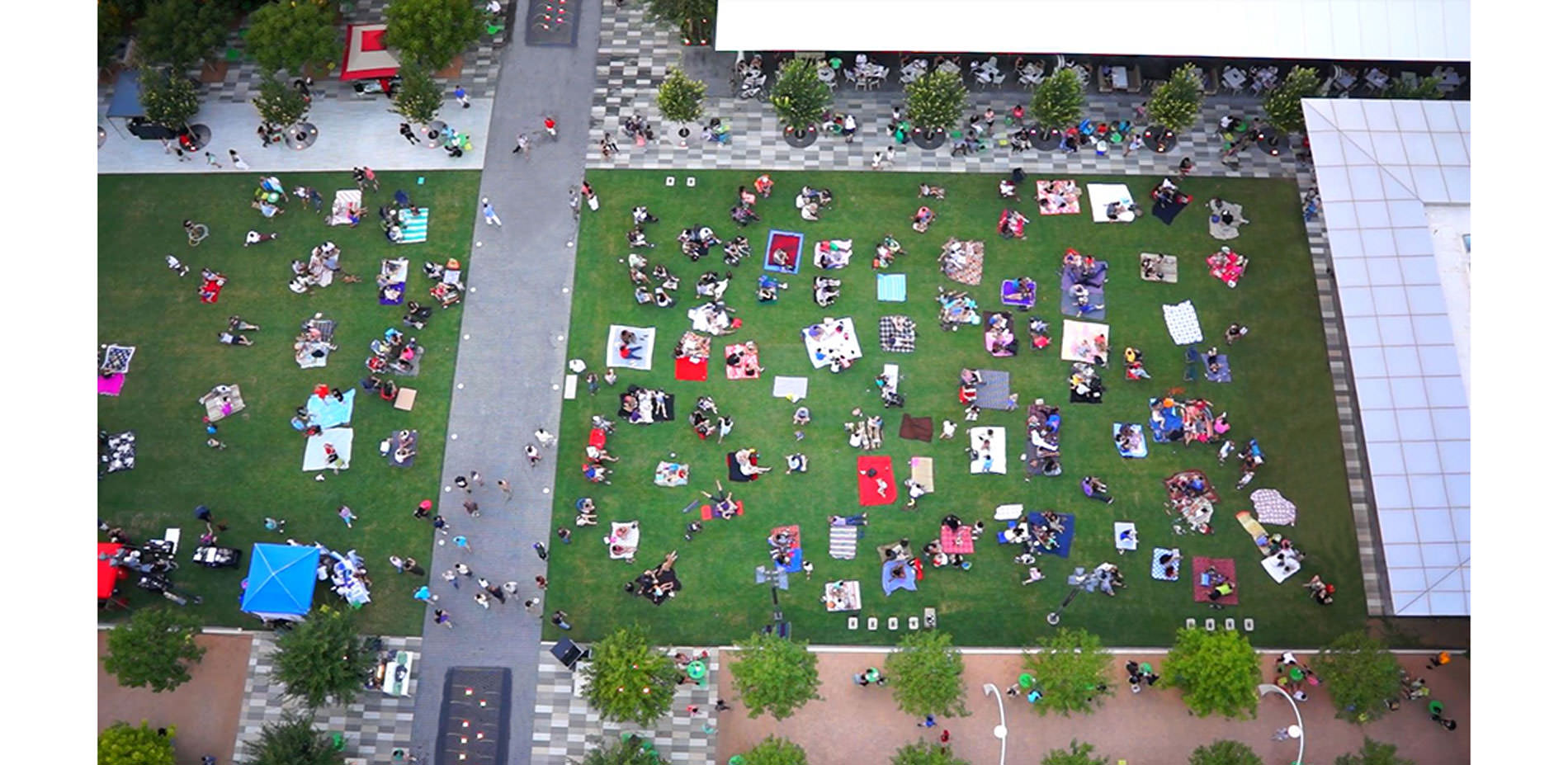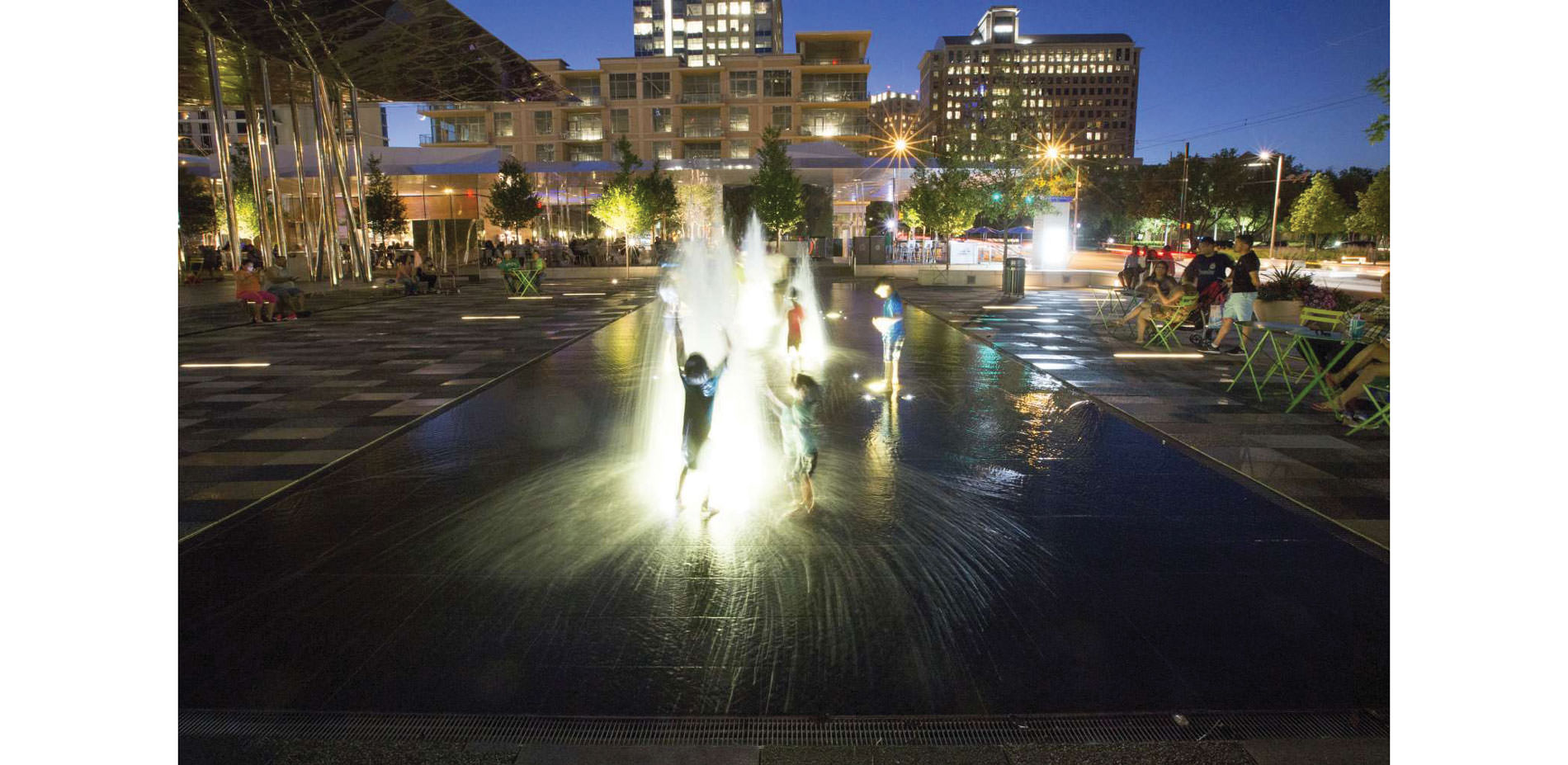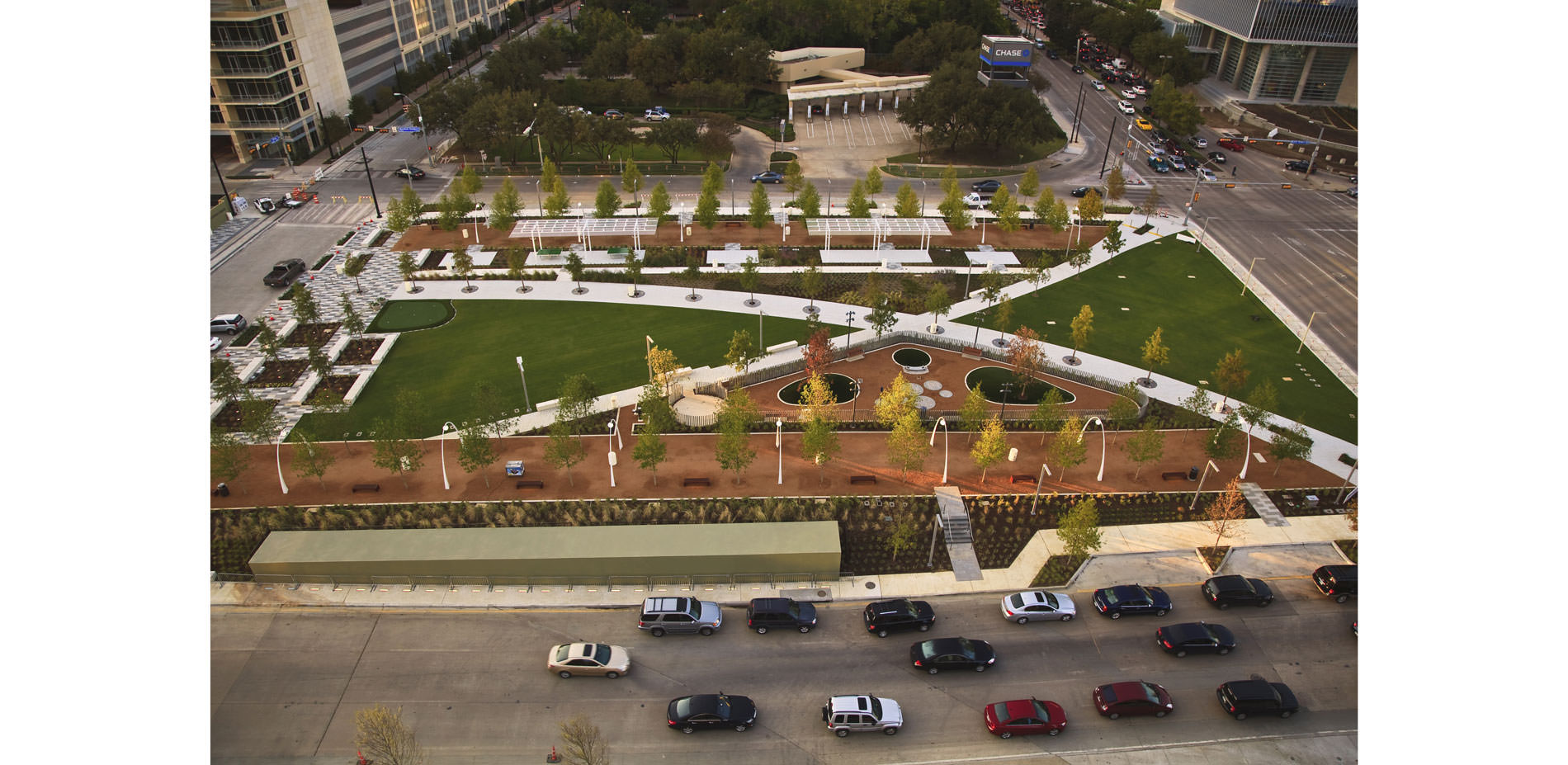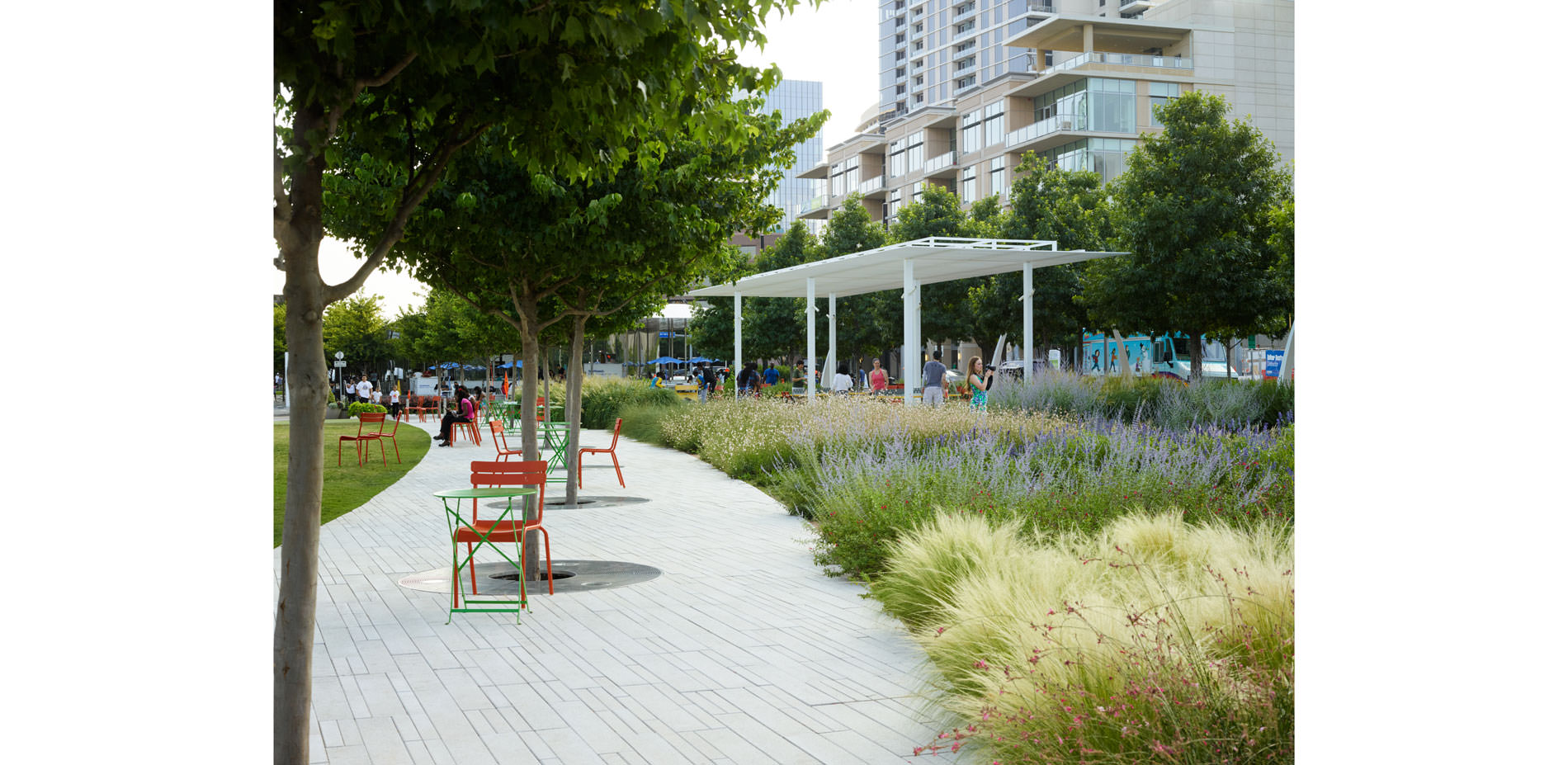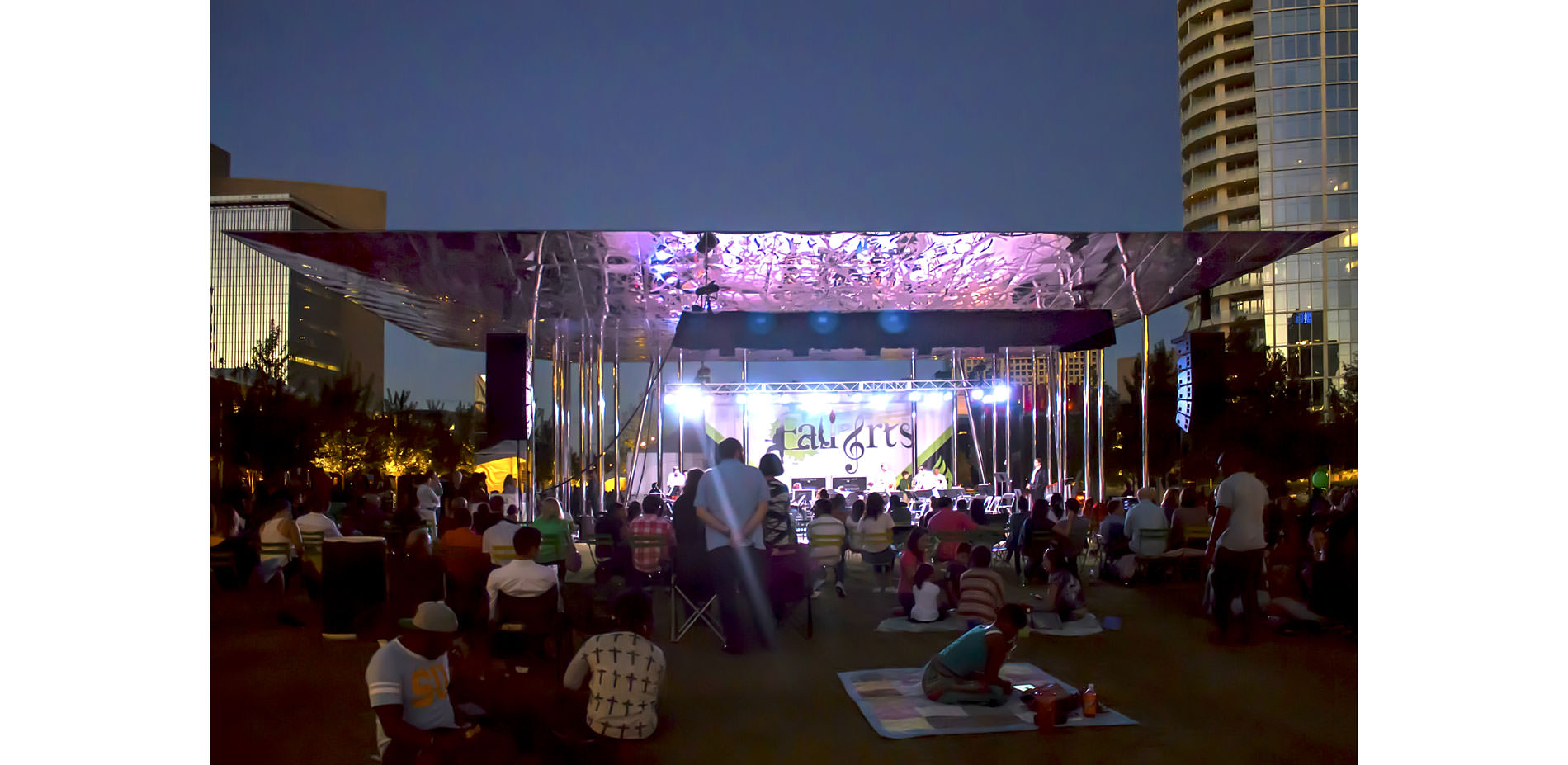Klyde Warren Park - Bridging the Gap in Downtown Dallas
Award of Excellence
General Design
Dallas, TX, USA | OJB Landscape Architecture | Client: The Woodall Rodgers Park Foundation | Experience Klyde Warren Park in Virtual Reality
It has totally reenergized the downtown core. People are moving in; it’s great for business; it’s open 24 hours a day.
- 2017 Awards Jury
PROJECT CREDITS
Structural and Civil Engineer
Architect
Programming
Operations & Management
Specialty Structural Engineer
Water Features Consultant
Lighting
Restaurant Interiors
Deck Contractor
Restaurant MEP
LEED Consultant
PROJECT STATEMENT
Klyde Warren Park is Dallas’s central urban park that has bridged the eight-lane Woodall Rodgers Freeway, which had been a barrier between Downtown and Uptown. The park reconnects the city’s downtown cultural district with the neighborhoods to the north. The park is designed to reflect the district through its modern design. The park has been warmly embraced by the community and has been a catalyst for economic development. Daily free activities include performances, lectures and fitness classes. A non-profit foundation manages operations and maintenance of the park. Built with public and private funds, the park features a flexible, pedestrian-oriented design, children’s park, great lawn, restaurant, performance pavilion, fountain plaza, games area, dog park and botanical garden. Dramatic environmental improvements include the sequestration of CO2 through native planted trees, temperature reductions from shade producing trees and canopies and water conservation through the subgrade reservoir’s collection of stormwater.
PROJECT NARRATIVE
Klyde Warren Park was constructed over one of the busiest freeways in Texas. For many years, the eight-lane Woodall Rodgers Freeway had severed downtown Dallas's Central Business and Arts Districts and the densely populated Uptown Neighborhood to the north. Restoring the connection has transformed the city by bridging the gap and creating a new heart of downtown. Klyde Warren Park is a vibrant, well-programmed 5.2-acre urban park that acts as a common ground for the surrounding museums and businesses. Since its opening, the park has welcomed more than a million visitors annually and has become central Dallas’ most popular public open space.
Built with a combination of federal, state, city and private funds, the park features a flexible, pedestrian-oriented design that arranges 13 programmed spaces designed with ample shade, seating and other amenities, including a carefully planned children’s park, a reading room and games area, a great lawn for 5,000 people, a 6,000-square-foot restaurant, an interactive fountain plaza, a dog park, a half-mile of walkable streetscape and a performance pavilion to encourage year-round use. The park operations, maintenance, and programming, are solely the responsibility of the private non-profit Foundation, made up of Dallas community leaders.
The park has had a major impact on the community, featuring a rich calendar of daily free programming including family activities, fitness classes, educational programs, and musical performances. The park also provides a host of amenities that can be used whenever the park is open, such as board games, and newspapers. These activities connect Dallasites together and result in many social benefits for park users including increased physical activity and reduced stress. The park has also dramatically increased attendance to the adjacent cultural institutions in the Arts District and has boosted ridership on the trolley line adjacent to the park.
A competitor with other outdoor Dallas venues in the downtown area, the park’s performance pavilion has become THE destination for outdoor concerts and events. Food trucks – which were planned as temporary food options while the restaurant was under construction – are so popular that they are now a permanent feature, resulting in a slight redesign of the perimeter paving to accommodate their crowds. Dogs of all sizes abound in the dog park and the success of the children’s park, which is regularly at capacity, is now being studied for expansion. Klyde Warren Park has truly been embraced by the citizens of the Dallas-Fort Worth metroplex, securing its place as a world-class urban park and the “front lawn” for downtown Dallas.
The park has contributed significantly to the economic development of the surrounding urban core, increasing activity for neighboring businesses and cultural institutions. Recent studies show an economic impact of $1.3 billion along with substantial new tax revenue. Real estate and property values surrounding the park have seen a steady increase since its opening. Property values of an undeveloped three-acre parcel development site adjacent to the park increased from an estimated $32.3 million market value in 2008 to $91.1 million following the completion of the park.
The park has also been a major driver for rental rate increases. Triple-net lease rates at Trammell Crow Center in the Arts District have had a 32 percent jump. On the north side of the park, lease rates at 2000 McKinney have climbed 56 percent, and rents at 2100 McKinney have appreciated an incredible 64 percent. All of this development spurred by the park will contribute to a projected 8.8% population increase in the two Census Block Groups surrounding the park by 2018, supporting the regional goal of making metropolitan centers attractive and viable places to live.
In addition to impacting real estate and property values, the park has provided several other economic benefits, including park operations and maintenance savings. By using a high-efficiency LED lighting system and fixtures with solar panels, the park saves approximately 94,000 kilowatts of electricity each year as compared to traditional lighting.
Klyde Warren Park incorporates numerous features intended to improve the environment of the area and increase sustainable practices Construction of the park over an existing freeway has numerous environmental benefits, including the sequestration of an estimated 18,500 pounds of CO2 annually through newly planted trees, interception of 64,000 gallons of stormwater runoff and a marked reduction in temperature (20-45 degrees in shaded areas), air pollution and noise.The park features a palette of regionally-appropriate trees, shrubs, and ornamental plantings – of which over 50% are native or adaptive to the North Texas area. This gives Klyde Warren Park a distinct sense of place in Dallas. The planting connects with the ecological needs of the environment, stimulating species habitation and bridging a divide caused by a highway corridor.
The planting beds are irrigated with a subgrade dripline system that reduces surface runoff and the live load of the water on the deck. Altogether, Klyde Warren Park – including its lawns, plantings and gravel surfaces – is more than 50% permeable, compared to the 100% impermeable freeway it covers. As for water conservation, strategies and activities were put in place that manage fresh water as a sustainable resource. A subgrade reservoir can collect and store up to 12,000 gallons of greywater from the park’s water features for treatment and reuse in irrigation. A drainage mat between the soil and deck infrastructure also stores excess water, helping to maintain soil moisture.
Engineering and designing an on-structure deck park that could bear the load of a 5.2-acre park and would impose limitations on soil depth and planting abilities was a significant challenge. This very unique site challenged the design team towards further innovation. The park creates a bridge over the 1,200 linear feet of recessed freeway consisting of concrete, pre-stressed box beams set on columns constructed outside the former walls of the freeway and supported by a new center wall. The concrete beams are arranged in groups with spacing in between, where concrete slabs span the spaces connecting to the bottoms of the beams, forming trenches. The trenches act like planter boxes, allowing the trees to grow to the desired size. A combination of geofoam and lightweight earth fill the trenches and cover the beams to provide the planting material, dramatically reducing the weight of the deck. The depth and width required for a healthy tree root-ball had to be considered early in the design process and resulted in a trough system built into the support truss system which allowed for sub-grade utilities, water feature systems, planting soil and other appurtenances. By dictating the spaces of trees, the grid became the guiding organizational force and determined the layout of the park. Another significant benefit of using the trenches was being able to design entrance points into the park at grade, meaning pedestrians could simply enter the park directly from the adjacent sidewalks without having to climb stairs which greatly enhanced accessibility.
The landscape architect was the lead designer for the project and set the tone for all site design decisions in collaboration with the architect, lighting designer, fountain designer and other specialty subconsultants.
PRODUCTS
Product Sources: FURNITURE
Product Sources: FENCES/GATES/WALLS
Product Sources: IRRIGATION
Product Sources: PARKS/RECREATION EQUIPMENT
Product Sources: STRUCTURES
Product Sources: WATER MANAGEMENT/AMENITIES
Product Sources: SOILS
Product Sources: HARDSCAPE
Product Sources: LIGHTING
- Hess, Erco, BEGA, iO Lighting, Celadon Group, BK Lighting, Lumiere, We-ef, DesignPlan, Color Kinetics, Permlight, Lithonia, Meteor
